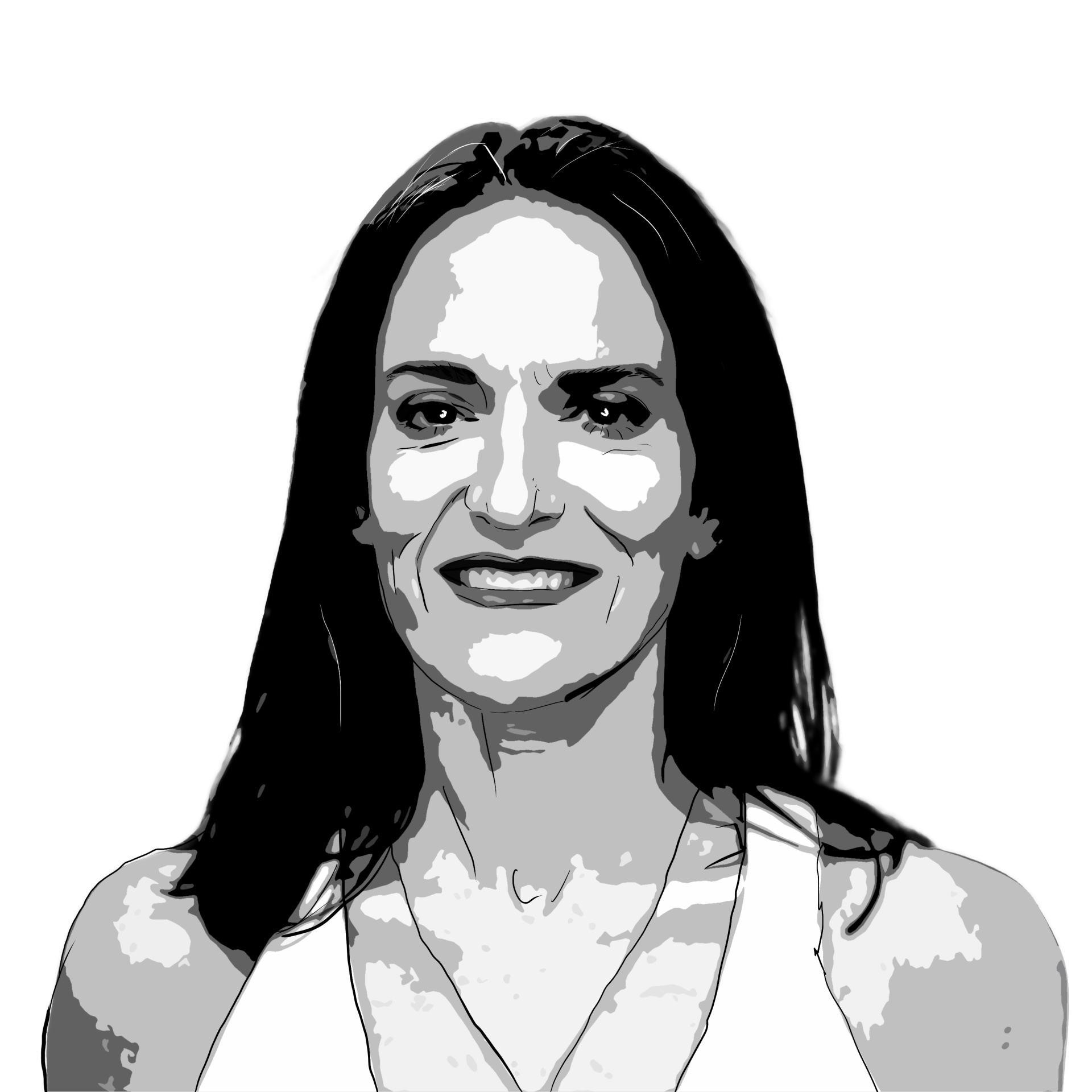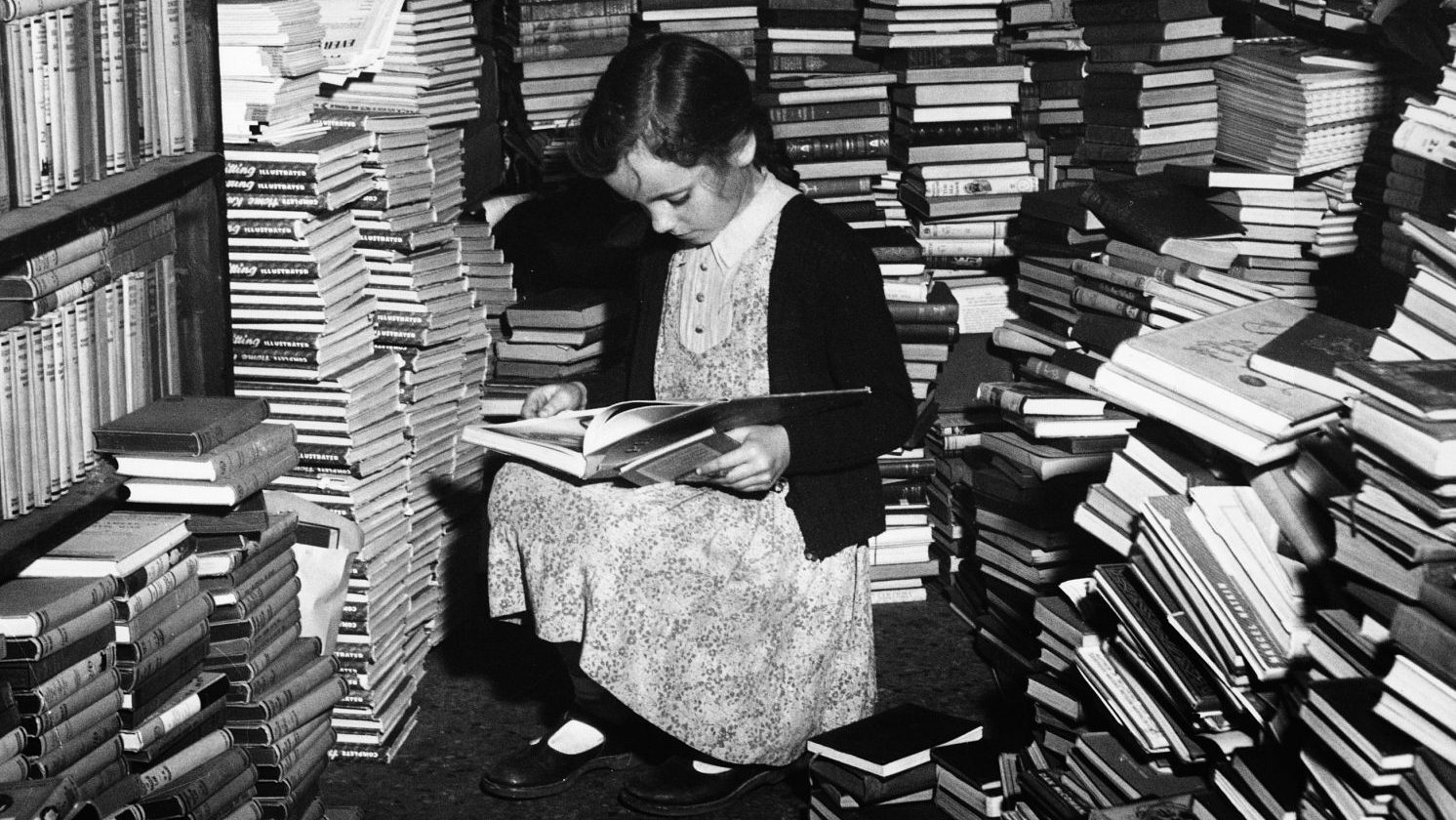Marie Le Conte
Why Be Happy When You Could Be Normal? By Jeanette Winterson (2011)
I sometimes avoid British books written with British audiences in mind, as they often make me feel like I’m wearing an ill-fitting dress and it’s somehow my fault. I also rarely read sad-sounding memoirs, because I feel that one chaotic upbringing was enough for me.
Still, I somehow ended up picking up this book, about Winterson’s childhood and about her life, and it changed my own. I remember finishing it at the back of the bus, last spring in New York, and crying tears which were happy and grief-stricken and overwhelmed and grateful all at the same time.
It’s a book that should be read by every woman and by every person who was ever made to feel too different to ever feel truly at peace. It’s so human it’s occasionally unbearable, but we keep going, as she did, and in the end we’re always glad we pushed through.
Matthew d’Ancona
Raise High the Roof Beam, Carpenters and Seymour: An Introduction, by JD Salinger (1963)
Teenagers read The Catcher in the Rye as a rite of passage, possibly alongside Jack Kerouac’s On the Road and a spot of Hunter S Thompson. But not so many move on to Salinger’s sequence of stories about the Glass family, a fictional clan of seven children in mid-20th century New York: their parents, Les and Bessie, are retired vaudeville performers, and the siblings are all precociously brilliant, appearing on the radio quiz show, It’s a Wise Child.
The two novellas collected in this volume, previously published in The New Yorker, describe, respectively, the wedding in 1942 of the eldest Glass, Seymour, and his brother Buddie’s portrait of him after his suicide (described in the separate 1948 short story, A Perfect Day for Bananafish). The world of this exotic, traumatised and often hilarious family is an extraordinary insight into the American intellectual culture of its time – not least Salinger’s own fascination with Eastern mysticism and spiritualism. This particular book is the heart of the saga – though the author’s estate has tantalisingly promised that there are more unpublished Glass stories written during his many years as a recluse in New Hampshire.
Sonia Sodha
Wolf Hall, by Hilary Mantel (2009)
There’s historical fiction, and then there’s Wolf Hall. None of us can ever really know what it would have been like living out the high politics of Tudor England, but Mantel’s extraordinary novel makes history come alive like nothing I’ve read before or since, in this story of Thomas Cromwell’s meteoric rise to become, for a while, Henry VIII’s most trusted adviser.
There’s much we don’t know about Cromwell’s origins, but Mantel beautifully fills in the gaps. And she somehow turns the facts consumed in many a dry school textbook into a gripping, living drama. We all know the ending that will eventually befall Cromwell in the third of the trilogy, but there were moments where I was so engrossed in the world Mantel creates for us that I forgot I wasn’t in the middle of a new story unfolding in real time. It’s a gorgeous and rewarding novel that I never get tired of rereading.
James Ball
How to Lie with Statistics, by Darrell Huff (1954)
I admit that a book about statistics is no one’s idea of a classic beach read – but this is without a doubt the book I’ve recommended most often and most widely. I’ve suggested it to journalism students, to colleagues, and to friends. I am fun at parties, I promise.
The reason is that to exist in the modern world, to know when we’re being lied to and how to decide who to trust, we need to have some kind of basic grasp of statistics, however much we hate maths and “numbers”, and this book is brilliant for doing just that.
Its virtues are many. It’s brief – a mere 142 pages – it’s clear, never technical, and in its way it’s often funny. You can breeze through it in a matter of hours and come out of it knowing a whole plethora of ways people try to trick you with figures, and how to spot it. There’s not many books we can say that for. It’s mostly timeless, too. The book was written in 1954, and some of its references are very much of that era, but that – along with the illustrations throughout – only add to its charm. Try it – I 110% guarantee you’ll love it.
Paul Mason
Gravity’s Rainbow, by Thomas Pynchon (1973)
It’s 1944. An American officer, his sexuality deformed during childhood through involvement in a weird Pavlovian experiment, is fornicating his way across London, creating a map of his female conquests on the wall of his office. But the map correlates precisely with the locations of the V2 rockets that have begun to fall. And in each case the sex precedes the impact.
As the authorities investigate, Tyrone Slothrop embarks on an epic journey across conquered Europe, pursued by power-crazed Yanks, devious British psychiatrists and his own subconscious, which leads him into encounters with witches, movie stars, survivors from a fictional black African SS regiment and a variety of disgusting former Nazis.
Pynchon’s 1973 novel haunts me because, amid the slapstick and a plot essentially ripped off from the Odyssey, he is a profound writer of emotion, conjuring up affect from the elements, the friction of skin on skin, and the doom-laden arc of history. I thought hard about naming more worthy books than this, but it is an unmissable landmark of American literature, which you can slip into your tote bag and live with on the beach all summer long.
By the time he is smuggling marijuana past the guards at the Potsdam Conference, you will be rooting for Slothrop until the inevitably annoying final page.
Tanit Koch
Shooting Stars: Ten Historical Miniatures, by Stefan Zweig (1927)
Why should everyone read Sternstunden der Menschheit? Because Stefan Zweig invented history as popular fiction long before Robert Harris did.
In 14 short stories written between 1927 and 1940 he zooms in on a moment and turns it into nail-biting literature: the “world minute of Waterloo”, Scott’s race to the South Pole, Handel’s feverish resurrection, endless setbacks to cable “the first word across the ocean” and how Lenin boarded the sealed train towards revolution.
Zweig’s turning points in the course of humanity are full of coincidences, ironies and psychological drama. To him, history depends less on political or economic driving forces than on the genius or at least the initiative of outstanding human beings. Each tale is told with the urgency of someone who knows how fragile civilisation can be. The Austrian Zweig, one of the most committed German-speaking pacifists, fled the Nazis and later committed suicide in exile.
Suggested Reading


When your book club picks a dud
Nigel Warburton
On Liberty, by John Stuart Mill (1859)
Published in 1859, the same year as Charles Darwin’s Origin of Species, JS Mill’s On Liberty is a slim but powerful book. He described it as a “philosophic textbook of a single truth.” That truth, usually known as the Harm Principle, is that adults of sound mind should be free to live as they please so long as they don’t harm others in the process.
Mill championed individual “experiments of living” and opposed “the tyranny of the majority.” He thought we should be free to make our own decisions and mistakes and not be forced to live as others believe we should. He defended extensive free expression, arguing that we should not hold our beliefs as dead dogma, but rather should actively seek out challenges to them.
We should be free to express our views, even if they cause offence, up to the hard limit of inciting violence.
Sophia Deboick
Living Well Is the Best Revenge, by Calvin Tomkins (1971)
The New Yorker art critic’s short book on wealthy US expats Sara and Gerald Murphy and the social world they created in the south of France in the 1920s is so evocative you can almost smell the jasmine and taste the cocktails.
Friends of Cole Porter and Ernest Hemingway, the Murphys were a pivot point for the international cultural glitterati; Picasso painted Sara and influenced Gerald’s own artwork, and the couple inspired F Scott Fitzgerald’s Tender Is the Night.
But while the Murphys’ “Villa America” in Antibes hosted legendary parties, the house was primarily an idyllic home for their three young children, and this is not a story of Jazz Age hedonism but rather of the life of personal passions and simple pleasures that a family built for themselves.As war loomed, personal tragedy befell the Murphys and their French idyll ended. Gerald never painted again. Tomkins’s book is ultimately a meditation on the beauty – and fragility – of both life and our creative ambitions.
Matt Kelly
The Grapes of Wrath, by John Steinbeck (1939)
The greatest story of human migration since Exodus, the brilliance of The Grapes of Wrath is its hard-earned veracity. Steinbeck’s work for the San Francisco News – especially his series of articles “The Harvest Gypsy” – informed every mile and every heartbreaking disillusion within this Great Depression tragedy.
Impossible to read today and not consider the huddled masses in the dunes of Calais; one century on, an analogue of the Joads’ haul from the dustbowl of Oklahoma to the promised land of California.
“There ain’t no sin and there ain’t no virtue. There’s just stuff people do,” says Jim Casy, the preacher who renounces religious belief in the face of the suffering he witnesses – perhaps the most famous line in a book replete with famous lines. Read it and weep.
Eleanor Longman-Rood
I Who Have Never Known Men, by Jacqueline Harpman (1995)
Earlier this year, The New World’s Matthew d’Ancona argued that Margaret Atwood’s The Handmaid’s Tale had become a better guide to 21st-century authoritarianism and contemporary America than George Orwell’s 1984. In that spirit, Jacqueline Harpman’s I Who Have Never Known Men should be read alongside it.
Published 10 years after Atwood’s classic, Harpman unintentionally took Gilead, ruled by theocracy, and ran with it. The novel sees 40 women trapped in an underground bunker, constantly watched over by male guards. The women do not know why they’re there nor what is left of society on the surface. Suddenly everything changes; an alarm sounds, their captors flee, leaving their cages unattended. They are free. But what does that mean in a reality where the worst has occurred?
Harpman’s closing line has stayed with me ever since. No spoilers, but it reminded me of the line from Faïza Guène’s exquisite novel Discretion: “Women die so many small deaths before their actual ones.”
Steve Anglesey
The Friends of Eddie Coyle, by George V Higgins (1970)
Doomed criminal Eddie Coyle has no friends. Deservedly, this first and best novel by Higgins has many. Elmore Leonard called it “the best crime novel ever written.” Its spare prose and unsparing characterisation have made it a touchstone for the great American noir and noir-adjacent writers of the last three decades: Richard Price, Dennis Lehane, James Sallis, George Pelecanos, SA Cosby.
The authenticity of the dialogue springs from long hours spent with criminals of all classes while Higgins worked as an assistant district attorney in Boston. There is masterful economy of style; not a word is wasted. And Higgins understands the best crime writing tends not to be about devilishly brilliant serial killers, extravagantly planned crimes or tough guys doing good in a bad world; it is about the human condition and the lives of ordinary people struggling against fate and circumstance.
Dale Shaw
Happy All the Time, by Laurie Colwin (1978)
As I get older, I want less to happen. This applies to all aspects of my life, including taking public transport (“Oh no, is that person going to sit next to me?”), visiting the cinema (“Oh no, is that person going to sit next to me?”), or sitting quietly at home (“Oh no, is that person coming to the door (with a view to sitting next to me?”). This desperate need for a lack of stimulation also bleeds into my cultural life.
Happy All the Time is this kind of book. Very little happens. And the things that do happen seem so slight. And yet you’re so often driven to the edge of tears without really understanding why. It just has some mighty emotional undertow. It’s quiet, life-enhancing, subtle and mesmerising. The ending, though nothing in particular happens, is devastating. You feel bereft.
Florence Hallett
The Diary of a Provincial Lady, by EM Delafield (1930)
Delafield’s incomparable book is funny, soothing and completely transporting, and an asset in any and every circumstance. First published in 1930 and in print ever since, it’s a sardonic, sparingly written account of a middle-class woman’s daily life in deepest Devon. Its diary format is perfect for dipping into, with any random page diverting you into some difficulty involving the insufferable Lady Boxe, the servants, the French governess, or her mostly silent husband.
Written at the start of the Great Depression, the “servant problem”, the overdraft, and the pawning of great-aunt’s diamond ring are all part of the daily business of keeping up appearances among the hard-pressed middle classes. Loosely autobiographical, the Lady’s encounters with various artistic and literary types are a hoot, her daily musings on early daffodils at the Vicarage, to “HG Wells, Women’s Institutes, infectious illness and Journey’s End” an absorbing and oddly familiar window on the past.
John Bleasdale
Do Androids Dream of Electric Sheep? by Philip K Dick (1968)
I’ve been a Dick-head (or Dickian as some prefer) ever since I couldn’t get into the A-certificate Blade Runner as a kid. The book is completely different from the movie, from that kooky title down. Rick Deckard is a schlub, with a perennially depressed wife, Iran . He wears a lead codpiece to protect his groin from the post-third world war radiation and has an electric sheep because his real one died and he can’t afford to replace it. He hunts down Andys (as replicants are called here) with the stoic patience of a bondsman.
Here, you’ll find mood organs to shift your emotions artificially (Iran dials up suicidal depression); a talkshow host called Buster Friendly who’s on TV 24 hours a day, and a religion based on virtual reality. It’s a profoundly witty examination of what it means to be authentically human and how humans fail constantly to live up to that definition. In true Dick fashion, the simulacra prove more real than the real.
Martin Nicholls
Drive Your Plow Over the Bones of the Dead, by Olga Tokarczuk (2009)
In a remote village on the Polish borderland, Janina, a 60-something woman with a love of animals, astrology and William Blake, finds her boorish huntsman neighbour dead, a shard of animal bone in his throat.
What follows is ostensibly a murder mystery, a sort of icy vegan noir, but veers off into a profound meditation on ethics, patriarchy and animal rights, all within a wildly entertaining 250 pages. Janina is a caustic, witty narrator with an utterly distinctive voice who is merciless – and very funny – in skewering the pompous old men who rule her world.
Not surprising then that the novel caused an uproar in conservative Poland when it was published in 2009 – though that didn’t stop Tokarczuk, who went on to win the Nobel Prize for Literature in 2018. This is the perfect introduction to her quirky, anarchic work.



